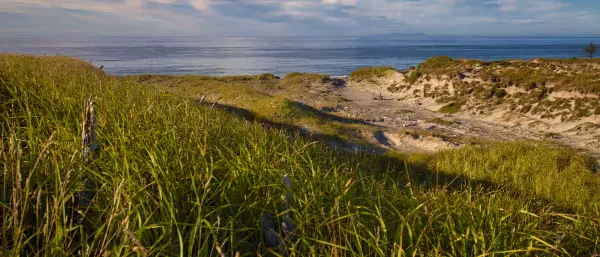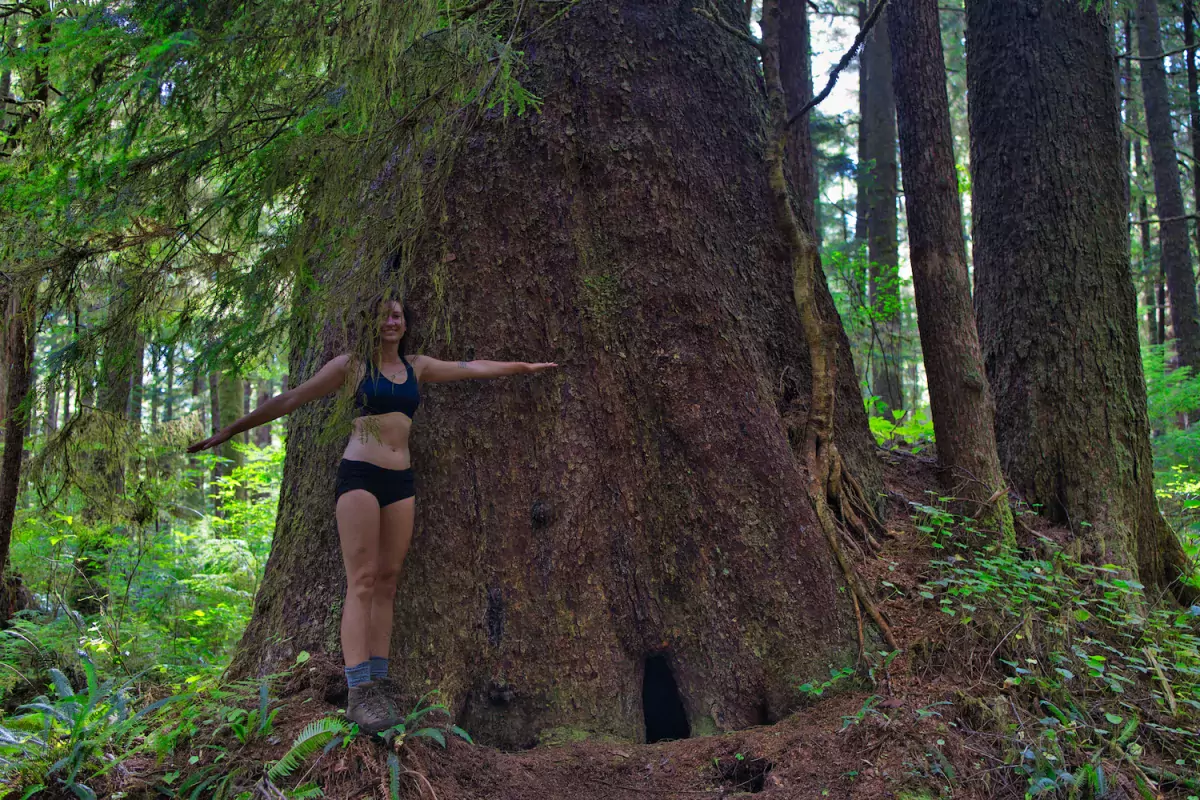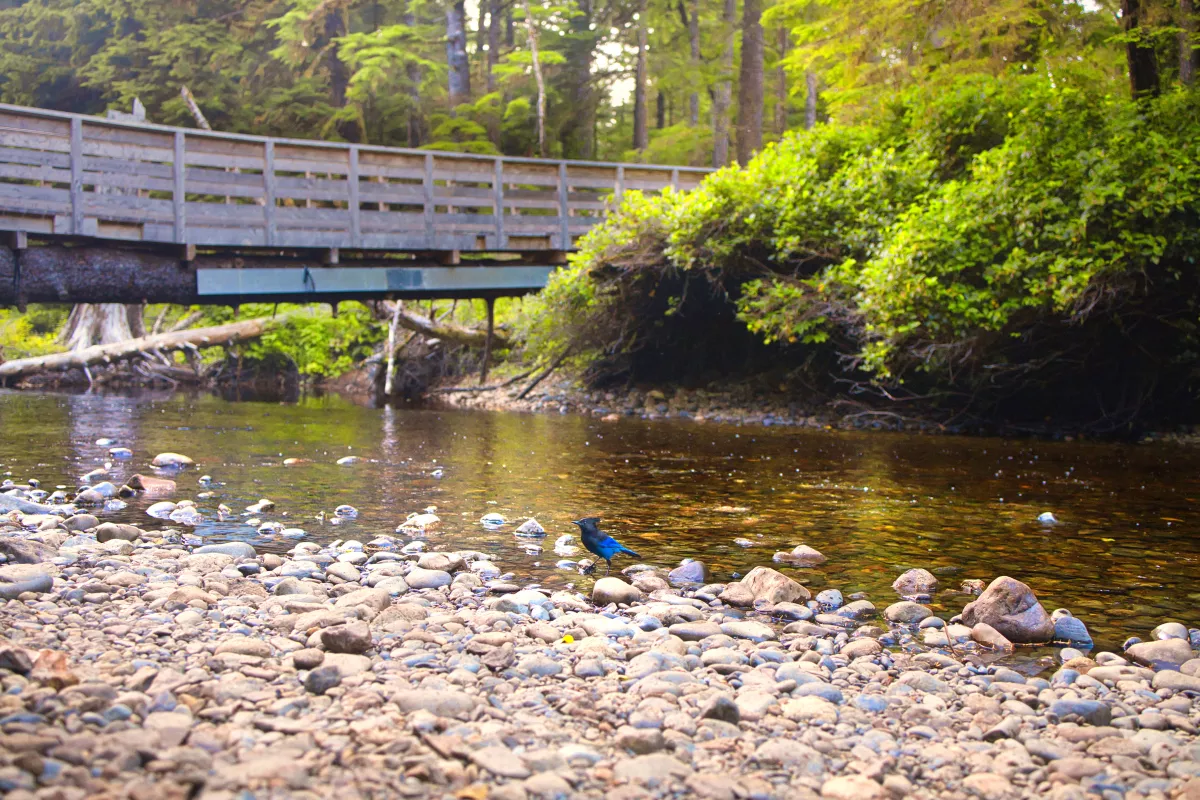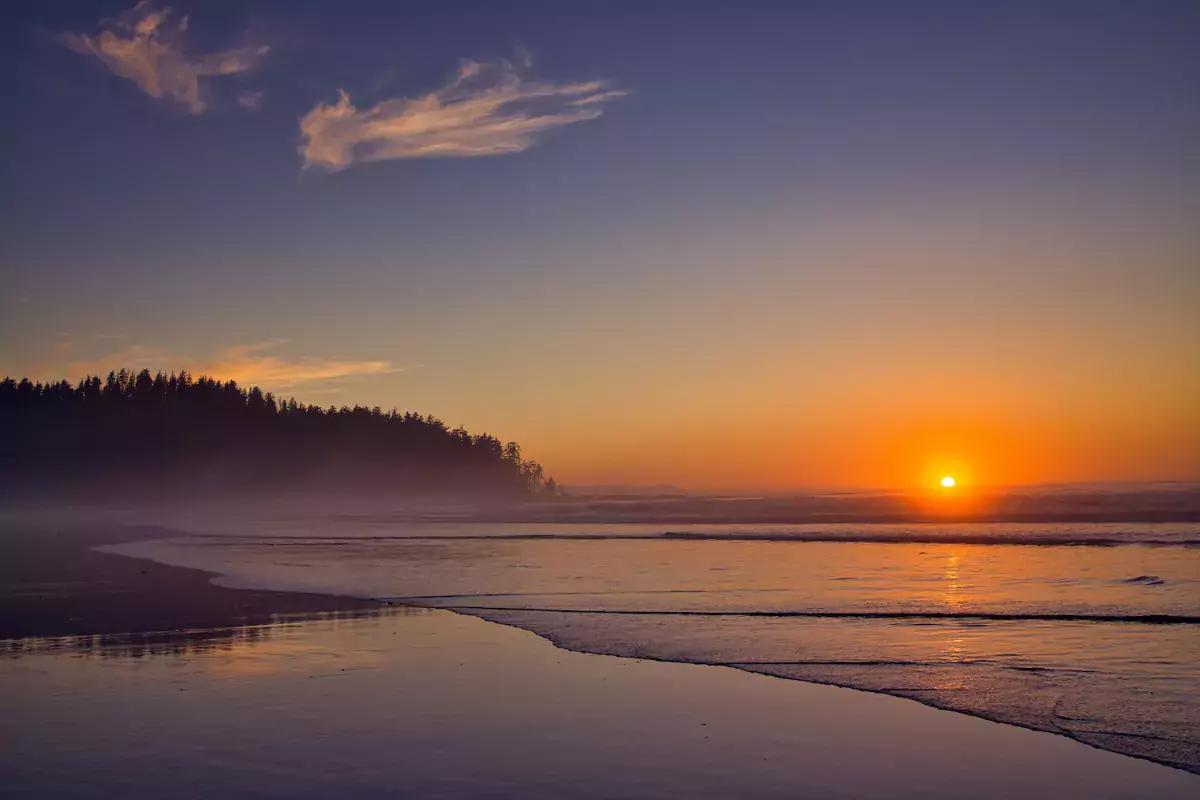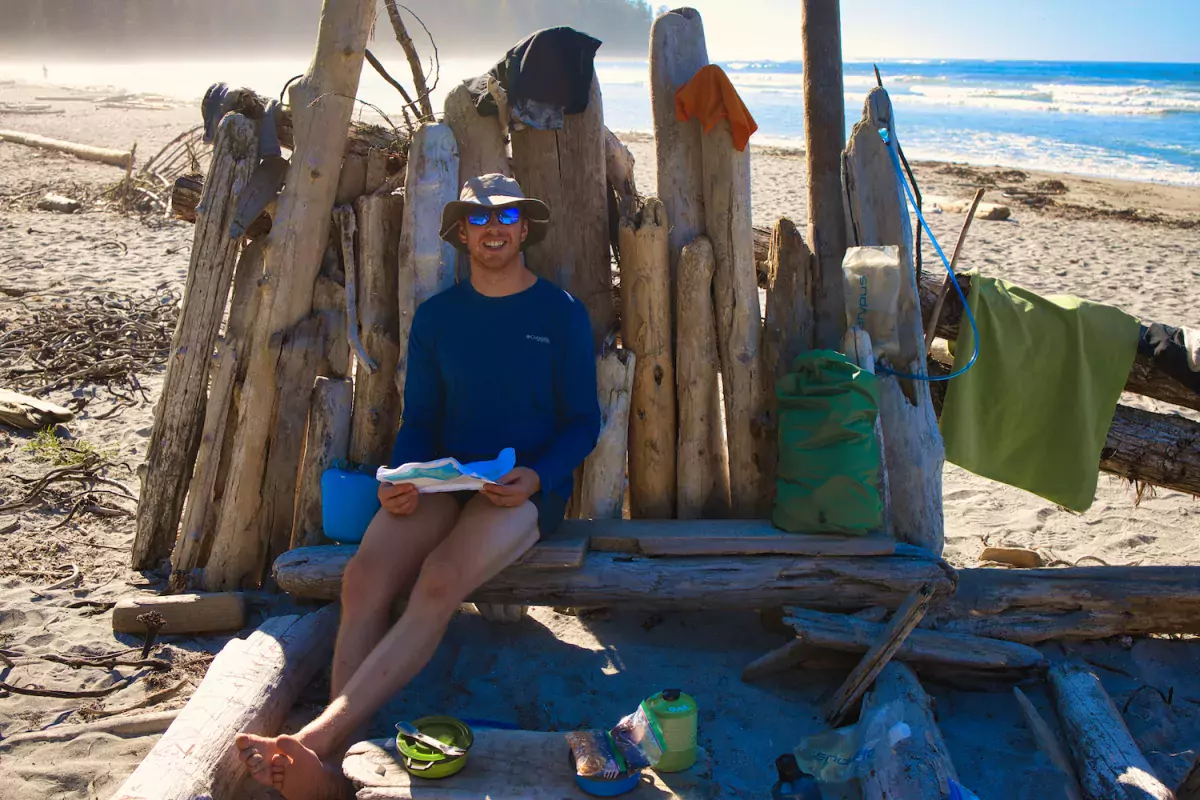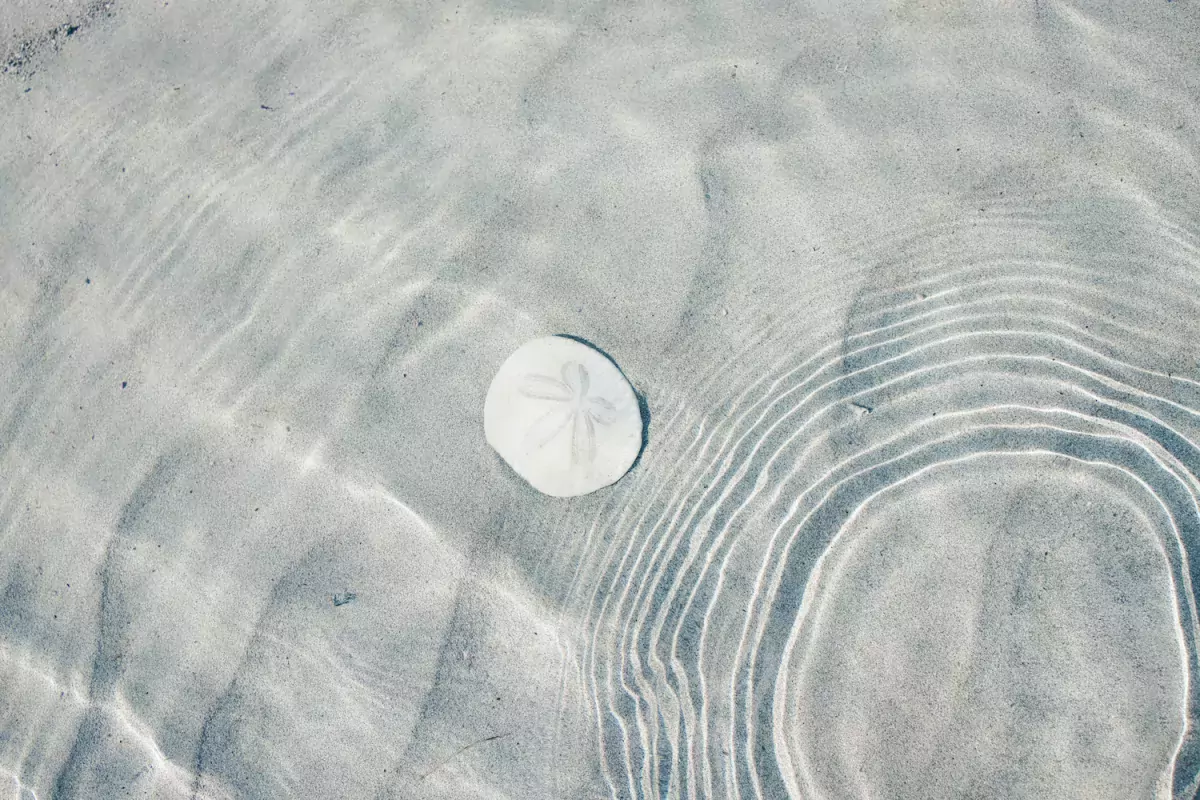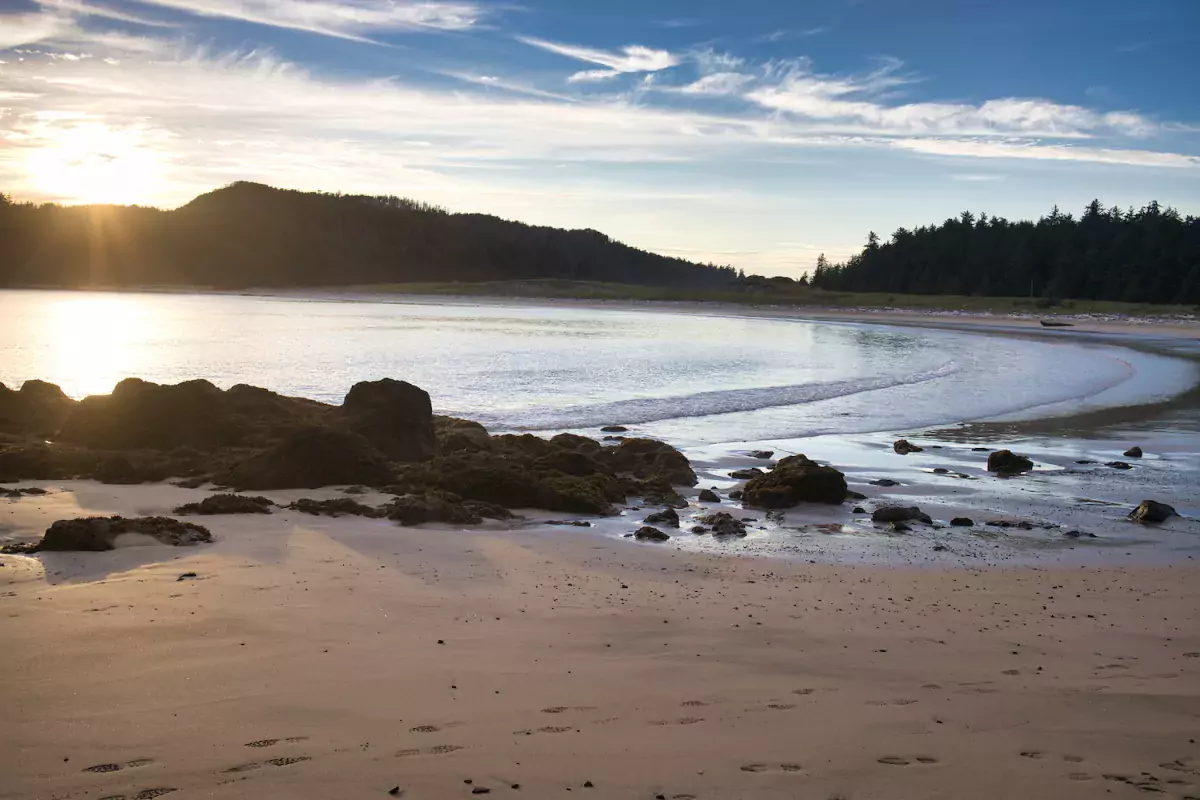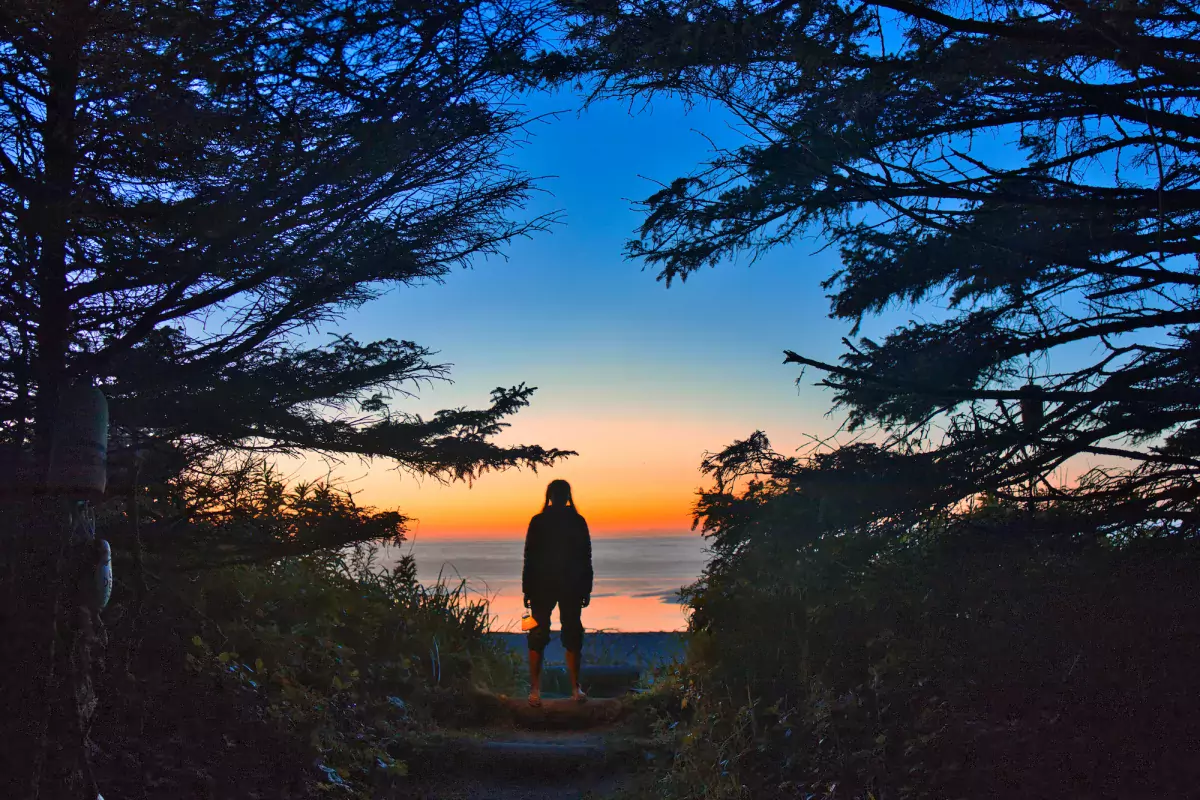Zen lessons from a multi-day hike on Cape Scott Trail, Vancouver Island
As you set foot on the Cape Scott trail, the whispers of ancient trees may echo tales of those who came before. Seasoned hikers warned of the wet and muddy terrain, yet nothing prepared me for the constant sludge underfoot. Each step over swampy roots and rock was a reminder that here the elements held sway. That's exactly what made this so thrilling.
This was my first multi-day backpacking and tenting experience. My husband and I set out through a dense rainforest to Vancouver Island’s northern tip, where I would truly understand what it means to be immersed in nature.
The Cape Scott Trail spans nearly 24 km one way. While ambitious hikers could conquer it in a day, the experience is worth savouring. This is a friendlier introduction to multi-day hiking than the connected North Coast Trail.
The Cape Scott Trail has some amenities like bear caches, tenting platforms, and even dugout toilets.
Join me on this adventure and find inspiration on ways to infuse Zen into your next hiking adventure.
Day 1: a forest of serenity
Skipping the first camping stop, a mere few kilometers in, the muddy and sometimes water-filled trail took us through a beautiful old forest.
Just as the trees started to change, we arrived at a pristine riverside site. The water ran clear and cool. It was here, amid the towering trees, that I felt the presence of those who had once called this place home.
Danish pioneers from the late 1800s had attempted to establish a community around the nearby Hansen Lagoon and Fisherman Bay. Remnants of wooden structures can still be found amidst the trees, and travellers' tales of "the largest cast iron pan I've ever seen" still linger.
Before that, this area was, and still is, the traditional territory of the Kwakwaka'wakw people, with villages, trails, and trade routes now overgrown by the forest.
This weaving together of nature and history is part of the trail's allure, suggests Taryn Eyton.
Get outdoors, get more connected, get more Zen.
Sign up for ZenSeekers enews for more transformative travel inspiration.
"Cape Scott is one of my favourite backpacking trips on Vancouver Island since it combines coastal rainforest, remote beaches, and lots of interesting settler history," says the adventure travel writer, founder of HappiestOutdoors.ca, and author of the forthcoming guide book Backpacking on Vancouver Island (Greystone Books, April 2024).
"While the hike to the beach is long, it's still a beginner-friendly trip since the trail is flat. It's also a good place to get your first taste of Vancouver Island's famous coastal mud," advises Eyton.
Her pro tip: "wear waterproof boots and gaiters," and "use hiking poles."
As we bedded down that first night, it felt like a regular camping experience. But it was about to get wild.
Zen immersion tip: Bring a pocket-sized nature guidebook for identifying unique flora or decoding bird calls. Connect with the ecosystem as you traverse trails.
Day 2: Forests, fields, waves
After a refreshing morning dip in the river, the gravity of our isolation set in. This same stream serves as your best natural source of water for our five-day excursion.
It’s here that the Cape Scott trail transforms from a mere hike into an immersion.
Continuing along the path, we transitioned from the ancient rainforest to what resembled Sub-Saharan Africa. A few more kilometres, and we emerged into a prairie field, where tall grasses swayed in rhythm with the wind.
The open horizon feels like a breath of fresh air before you head back into the temperate rainforest towards the coast.
Even before you see it, the sound of waves crashing against the shore fills the air. As if unveiling a hidden treasure, the trail opens up to reveal the first of several stunning sandy beaches.
Nels Bight. It’s a sight to behold, a slice of paradise that feels almost surreal. The beach stretches out before us, its golden sands inviting us in. Calm crystalline water invited us to wade in with large waves crashing further out.
Capturing the beauty beneath the surface, I glimpsed a delicate sand dollar dancing in the current.
Crude driftwood structures line the shore, home to many years of campers.
Zen immersion tip: Pack a small sketchbook and watercolour pencils. Let scenic views inspire your inner artist, imprinting the landscape on your memory. Lighter than a camera, the pencils can even double as firestarters in dire need.
Day 3: a precious coastal gem of solitude
Venturing to Experiment Bight, the next beach on our map, everything appeared frozen in time—another stunning sandy coastal beach.
Next, we passed through the Cape’s neck, witnessing dramatic changes in scenery. The cape's neck features a massive sand dune and whispers tales of past seafarers.
This was a crossing point, a threshold between worlds, where vessels would be carried over land rather than left to chance through the treacherous waters around the cape.
Through the neck, we arrived on the other side at Guise Bay, a treasure trove that made us wonder if we’d somehow arrived in Hawaii. The sandy shore and ocean cove stretched out before us, a canvas of tranquility framed by the towering forest.
Alone in this sanctuary, we were rewarded with solitude, proving that the path less traveled leads to extraordinary discoveries.
The rhythmic symphony of small waves provided a soothing backdrop to our evening, as the moon and stars painted a celestial masterpiece above.
ZEN immersion tip: Collect a smooth stone before bed, holding a different one each night to ground yourself. It's a simple yet profound way to connect with the land. Remember to return the stone where you found it the next day.
Day 4 & 5: cosmos, creatures, and creature comforts
In a dance with nature, sunsets, moonrises, and stargazing filled our evenings. Misty mornings revealed fresh bear and wolf tracks, a reminder of our place in someone else's domain.
The Cape Scott Lighthouse, perched on the cliffs of the northern tip of Vancouver Island, became our final destination before the return journey. A water tap at the lighthouse provided much-needed refreshment for thirsty travelers. With lighter backpacks, we completed the return trip in one day, passing through coastal forests, forgotten fields, and ancient rainforests.
This introduction to multi-day hiking was an immersion in nature and reflection, leaving me confident it wouldn't be my last.
Zen immersion tip: Try starlight constellation mapping. Print a star chart for your hike's time and location. Before bed, identify constellations above you, creating a personal cosmic guide for your night journey.
When you go
Getting there Driving is the easiest way to get to the Cape Scott Trail. Once you’re on Vancouver Island, go north, towards Port Hardy.
Just before you get to Port Hardy, you’re going to turn left onto a gravel road (Holberg Road) marked with a Cape Scott Provincial Park sign. You stay on this gravel road for a long time, passing through the small village of Holberg: Look out for signs to turn west along San Josef Main and keep following Cape Scott signs until you reach a parking lot and a very obvious trailhead entrance
The whole trip can take approx 6 hours from Naniamo.
Booking You do not need to book ahead to do the Cape Scott Trail, which is open year-round. Camping fees are in effect from May through September which can be paid at the trailhead or online ahead of time.
More info
The Cape Scott Park page is a wealth of FAQ’s to help you get there.
BC Parks is a great resource for what to expect, and advisories.
Vancouver Island North will connect you with plenty of biking, hiking, kayaking other adventures along the way. The North Island is quite a treasure trove of cool experiences.
Here's a cool video from Northern Vancouver Island that gives a sense of the experience.
More multi-day hiking experiences to try
Tips from the ZenSeekers community:
“Backcountry hike/camp, stay first night at Elbow Lake, second night at Tombstone, third night back at Elbow Lake. It’s a great entry-level multi-day hike/camping.” *The road to Elbow Lake trailhead is a seasonal closure. Check for openings by June 15th.
- Holly Herman, @letsgohiking.ab on Instagram
“The Bowron Lake chain (not a hike obviously, but SO GOOD!!) Monkman falls park in tumbler ridge! The 7 summits in wells by foot”
- Ember Harper-Fedirko, @cariboo.adventure.media on Instagram
“Cahill Lake Trail in the Kootenays can be a good intro to a multi day hike/camp. It starts in the town of Slocan and follows Slocan Lake (also a fantastic multi-day canoe/kayak trip!) and up into the mountains of Valhalla Provincial Park to a few mountain lakes that have designated campsites on them (Emerald Lake & Cahill Lake)”
- Madeline Williams, @madelinejwilliams on Instagram
More hiking tips & trails
Find your next nature escape, with ZenSeekers. Be sure to sign up to the newsletter for more like this!
Like Our Facebook Page
